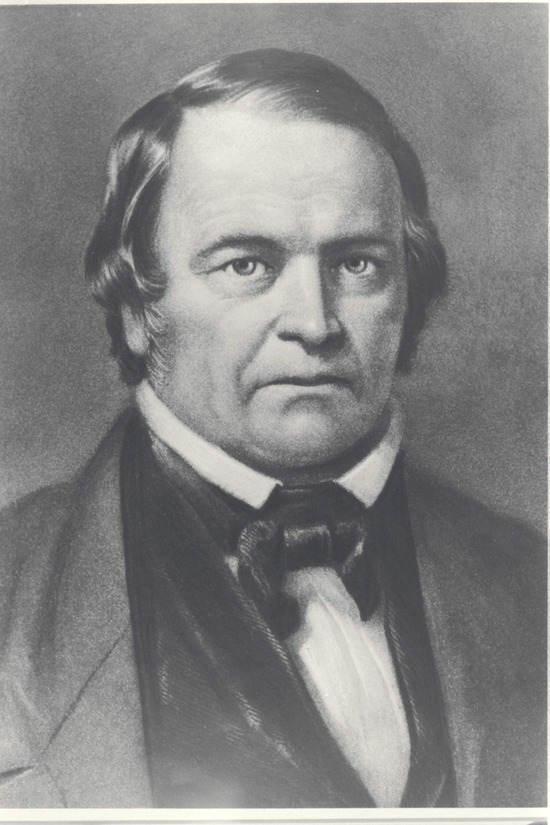How Adventists Developed the Sanctuary Doctrine and What It Means
The sanctuary was a building at the center of ancient Israelite society that gives us a small picture of the original sanctuary, God’s throne room in heaven (Hebrews 8:1-2).
God instructed the Israelites to build the sanctuary because He wanted them to understand the plan of salvation from start to finish. It shows us how He will bring an end to sin.
This teaching especially intrigued early Advent believers.
Even before the start of the Seventh-day Adventist Church, they discovered this doctrine as God guided their earnest Bible study. They realized that the sanctuary teaching connects Scripture and helps us understand events before Jesus’ coming.
So, let’s break down this doctrine and understand how it came about. We’ll cover:
- What is the sanctuary?
- What is the sanctuary doctrine, and how did it develop in Adventism?
- Is the sanctuary doctrine unique to Adventism?
- How is the sanctuary doctrine relevant today?
But first, here’s a quick review of the sanctuary itself.
What is the sanctuary?

Photo by Kaushik Panchal on Unsplash
The sanctuary, as described in Scripture, is God’s dwelling place in heaven (Exodus 15:17). There, Jesus Christ intercedes on our behalf before God’s throne (Hebrews 7:25; 8:1-2).
Often, though, when we think of the sanctuary, we first think of the earthly structure God told the ancient Israelites to build (Exodus 25:8). However, this structure was really just patterned after the true sanctuary in heaven (Exodus 25:9; Hebrews 8:5).
Bible scholars use the term type to refer to the ancient Israelite sanctuary. The type is like a small replica of the ultimate fulfillment, which is referred to as the antitype.
A classic example of types and antitypes is Adam and Jesus. Adam, called God’s “son,” is the type. By choosing to disobey God in the Garden of Eden, he failed and brought sin into the world. But Jesus, the Son of God, became the antitype that redeemed Adam’s failure (Romans 5:12-15).
Similarly, the Old Testament sanctuary is a type of another sanctuary—the one in heaven. Hebrews 8:2 refers to it as the “true tabernacle which the Lord erected, and not man” (NKJV). After Jesus died and rose to life, He returned to heaven and the heavenly sanctuary. There, He performs His high priestly ministry on our behalf, representing us to God the Father (1 Timothy 2:5).
The Old Testament spends a significant portion explaining the earthly sanctuary and its services to help us understand this heavenly sanctuary and the plan of salvation.
A brief overview of the ancient Israelite sanctuary
God directed Moses and the people of Israel to build a sanctuary in the wilderness—which became the basis for Solomon’s magnificent temple in Jerusalem (1 Kings 5-7). God had a couple of purposes in mind with this object lesson.
First and foremost, He wanted to be close to His people (Exodus 25:8). Sin separates us from God, but the sanctuary symbolizes how He removes that separation to be with us.
Second, He wanted to illustrate the plan of salvation.
The Israelites were spiritually young and would learn better through things they could see. They wouldn’t understand complex, abstract concepts. So, God brought salvation to them in their language—the sanctuary.
The sanctuary had three different sections to it: the courtyard, the Holy Place, and the Most Holy Place.
In the courtyard, priests sacrificed lambs upon the altar of burnt offering to symbolize the forgiveness of sins. They would wash themselves in a basin before entering the Holy Place (the first section of the sanctuary).
The Holy Place contained a table of bread, a lampstand, and an altar of incense, where the priests performed other ceremonies.
The Most Holy Place contained one article of furniture, called the Ark of the Covenant. It held the Ten Commandments, a pot of manna, and Aaron’s rod that budded. This section of the sanctuary, though, was reserved for the high priest, who only entered there once a year—during a feast called the Day of Atonement. On this day, the high priest made a special sacrifice on behalf of all the Israelites.
Why?
All through the year, the priests performed the daily sacrifices that represented Jesus’ sacrifice for us as the Lamb of God (Hebrews 9:6-7; John 1:29). They took the blood of the animal sacrifices, carried it into the Holy Place of the sanctuary, and sprinkled it there (Leviticus 4:35). Sometimes, they also roasted the sacrifice and ate it to symbolize the way Jesus carried our sins in His body (Leviticus 10:17-18; Hebrews 9:28).
The result was a sanctuary full of sin.
It needed to be cleansed, and this was the purpose of the Day of Atonement. Here’s how Leviticus describes it:
“Atonement will be made for you on this day to cleanse you, and you will be clean from all your sins before the Lord…. The priest who is anointed and ordained to serve as high priest in place of his father will make atonement. He will put on the linen garments, the holy garments, and make atonement for the most holy place. He will make atonement for the tent of meeting and the altar and will make atonement for the priests and all the people of the assembly. This is to be a permanent statute for you, to make atonement for the Israelites once a year because of all their sins” (Leviticus 16:30, 32-34, CSB).
The high priest would carry the blood of a special sacrifice into the Most Holy Place and sprinkle the blood there. When he finished the ritual, the sanctuary and God’s people were symbolically clean of all sin.
Adventists believe that this Old Testament feast is a type of a judgment that will take place before Jesus returns. That judgment will result in a complete cleansing of the heavenly sanctuary so that Jesus can return and bring His followers to heaven.

Let’s take a closer look at how these teachings developed in the Adventist Church.
What is the sanctuary doctrine, and how did it develop in Adventism?
The doctrine of the sanctuary describes how the earthly sanctuary mirrors the heavenly one within the plan of salvation. It helps us understand the judgment that occurs before Jesus returns, known as the Investigative Judgment. This doctrine is foundational to the theology of the Seventh-day Adventist Church, so much so that it’s one of our fundamental beliefs.1
To understand how it all started, we’re going to take a trip back to 1844—a time when sincere Christians from many different denominations thought Jesus would return on October 22nd.
Millerites and the cleansing of the sanctuary
The sanctuary doctrine has its roots in the aftermath of the Great Disappointment of 1844. The Millerites, followers of William Miller, had concluded Jesus would return on October 22 of that year. Their conclusions came from Daniel 8:14, which says “the sanctuary shall be cleansed” after a prophetic time period.

The Millerites, based on popular Christian interpretations of their time, had assumed that the sanctuary refers to the earth and that it would be cleansed by fire when Jesus returned.2
They were bitterly disappointed when He didn’t come.
Some of them went back to the Bible to find out where they’d gotten it wrong. Two of those people were Hiram Edson and his friend, Owen R. L. Crosier. They had been perplexed and disheartened when Jesus didn’t return on October 22nd, but they’d determined not to give up. One day not long after the Disappointment, they set out to visit some friends and encourage them in the faith. As Edson was walking through a field, he suddenly stopped.
Right there, the Holy Spirit impressed him that the cleansing of the sanctuary in Daniel 8:14 was not about Jesus coming to the earth. Instead, Jesus had entered the Most Holy Place of the sanctuary in 1844.3
Encouraged by this, Edson, Crosier, and another friend, Dr. F. B. Hahn, dove into the Bible to study the subject of the sanctuary. They confirmed that 1844 was a special date—just not the date of Jesus’ second advent.
It was the end of one thing and the beginning of another.
The key lay in the interpretation of sanctuary in Daniel 8.
Studying to understand the Great Disappointment

Image by Gerd Altmann from Pixabay
When early Adventists realized that Daniel 8:14 wasn’t referring to Jesus’ coming, they decided to study what “the cleansing of the sanctuary” really meant.
As we pointed out, the Millerites had thought the sanctuary referred to the earth. And by interpreting the sanctuary as the earth, the only logical explanation for that phrase was Jesus’ return. He’d come back, take His followers to heaven, and cleanse the earth with fire.
After the Great Disappointment, though, Edson and Crosier reviewed these verses and others. What they learned changed their thinking.
The sanctuary, as we already saw, is a type of the one in heaven. The cleansing of the sanctuary in Daniel’s vision refers to the cleansing of the heavenly temple.
Just as the priests in ancient Israel symbolically brought the people’s sins into the sanctuary throughout the year, the heavenly sanctuary contains the record of sins forgiven by Jesus’ death on the cross (Jeremiah 17:1; Malachi 3:16; Revelation 20:12).
Here’s how the apostle Paul describes it in the New Testament:
“According to the law almost everything is purified with blood, and without the shedding of blood there is no forgiveness. Therefore, it was necessary for the copies of the things in the heavens to be purified with these sacrifices, but the heavenly things themselves to be purified with better sacrifices than these [animal sacrifices]” (Hebrews 9:22–23, CSB).
Jesus, our great High Priest, opens the records of human history and looks over the life of each person. He looks at their heart’s intent—not just their actions—and judges whether they truly believed and accepted Him.
This judgment, what we call the Investigative Judgment, began in 1844. And it’s still continuing today.
We can’t see it or feel it, but in heaven, Jesus is performing this work (Daniel 7:9-10, 13-14). And thankfully, this judgment doesn’t have to create fear in our hearts because Jesus is our intercessor whose blood covers our sins (1 John 2:1; Hebrews 10:10-14).
Learn why we believe this judgment began in 1844.
What Adventists did with these discoveries

The sanctuary doctrine was important to Adventists because it helped them understand why Jesus hadn’t returned in 1844, and it expanded their understanding of God’s plan to end sin. It showed them that we are living in the time of judgment before Jesus returns.
When the early Advent believers came to these conclusions, Crosier and another Adventist began publishing their findings. They wanted to inform and encourage other Advent believers who were struggling with what happened at the Great Disappointment.
More early Adventist leaders, such as Joseph Bates, studied these ideas on their own and came to the same conclusions.4
Adventists began to see how the sanctuary pointed to God’s beautiful plan of salvation and connected many teachings in the Bible, such as the crucifixion, Christ’s ministry in the sanctuary, the Second Coming, the judgment, and the Ten Commandments (which are contained inside the Ark of the Covenant).
But is the Adventist Church the only one that teaches the sanctuary doctrine?
Is the sanctuary doctrine unique to Adventism?
The ancient Israelite sanctuary is familiar to many Christian denominations, though the specific sanctuary doctrine we’ve explained here is unique to Adventism. The doctrine stems from the Bible studies of early Adventists as they earnestly sought to understand the Great Disappointment. As God blessed and guided their study, they began to put the pieces together, and it eventually became one of our fundamental beliefs.
Later, Ellen White—a young woman whom Adventists believe had the gift of prophecy—received insights from God that helped confirm what the Advent believers had found in the Bible.
One of the visions coincided with what Edson and Crosier had discovered: that Jesus moved from the Holy Place to the Most Holy Place in 1844.5 In another vision in 1847, she saw more detail of the sanctuary in heaven.6

She wrote about this incredible vision:
“After viewing the glory of the holy, Jesus raised the second veil and I passed into the holy of holies. In the holiest I saw an ark; on the top and sides of it was purest gold. On each end of the ark was a lovely cherub, with its wings spread out over it…. Jesus stood by the ark, and as the saints’ prayers came up to Him, the incense in the censer would smoke, and He would offer up their prayers with the smoke of the incense to His Father.”7
This vision put together the pieces of her other visions about the sanctuary. And though it never replaced earnest Bible study, it also reassured the Adventists that they had, indeed, come to the right conclusions in their study.
As we’ve seen, the sanctuary doctrine was incredibly relevant to Adventists as they sought to unravel the Great Disappointment. But does it have anything to do with us today?
How is the sanctuary doctrine relevant to Christians today?
The sanctuary on earth wasn’t only a lesson book for the ancient Israelites. It still helps us understand God’s plan to save us from sin and shows us what Jesus is doing for us—today!
As we’ve seen, the sanctuary is entwined with Bible prophecy, showing us that Jesus is in heaven as our intercessor right now, helping us and strengthening us. He’s also doing a special work of cleansing the records there so that He can return soon and end sin, evil, and suffering.
That means that the sanctuary shows us where we are in the timeline of end-time events. We’re not far from the Second Coming!
Above all, the sanctuary encourages us that God wants to be with us and is doing everything possible to make that happen—through the sacrifice of Jesus and His work of intercession and judgment.
He is bridging the gap that sin created between us and Him. That way, we can live with Him forever in a world of peace and joy.
- “What Adventists Believe About Christ’s Ministry In The Heavenly Sanctuary,” Seventh-day Adventist Church. [↵]
- Holbrook, Frank B., Doctrine of the Sanctuary: A Historical Survey, p. 9. [↵]
- “The Advent Movement Beyond the Great Disappointment,” Lineage. [↵]
- Ibid. [↵]
- White, Ellen, Early Writings, p. 54-56. [↵]
- Coon, Roger W., The Great Visions of Ellen G. White, p. 41. [↵]
- White, Ellen, Early Writings, p. 32. [↵]
Questions about Adventists? Ask here!
Find answers to your questions about Seventh-day Adventists
More Answers
Why Many Seventh-day Adventists Choose a Vegetarian Diet
Why Many Seventh-day Adventists Choose a Vegetarian Diet?You may have an Adventist friend who is vegetarian, or maybe you’re attending a Seventh-day Adventist Church for the first time and notice the potluck doesn’t have any meat. This isn’t unusual in Adventism. In...
The Health Benefits of Fresh Air You Should Know About
The Health Benefits of Fresh Air You Should Know About“When you can’t breathe, nothing else matters,” the American Lung Association tells us. And while that’s true, the kind of air you’re breathing will determine the health benefits you experience. Breathing fresh...
What Do Seventh-day Adventists Choose to Eat?
What Do Seventh-day Adventists Choose to Eat?Food blogs overwhelm the internet; food fads are all the rage; and copycat and healthy versions of food are the subject of many a get-together. Eating—and eating the best way—is a big deal. And everybody has a different...
10 Incredible Ways Sunlight Can Improve Your Health
10 Incredible Ways Sunlight Can Improve Your HealthAre you concerned about sunlight’s negative effects? You might be the one who lathers on the sunscreen and covers up when you go outside. Or maybe you avoid being outside as much as possible. You might be surprised,...
Why Is Water So Important?
Why Is Water So Important?We all know that water is a substance we can’t live without. It quenches our thirst and keeps us hydrated on the inside. And it’s necessary for hygiene and cleansing on the outside too. But did you know that the cleansing properties of water...
Ellen White’s Writings and the Adventist Health Message
Seventh-day Adventists are known for their emphasis on healthy living. And Ellen G. White was a significant influence in the development of this priority and practice among Adventists.
Health Clinics
Ellen White and Adventist Healthcare—Ahead of Their Time Medical care in the mid-1800s was primitive, to say the least. Basic concepts we take for granted—such as proper handwashing or recognizing the dangers of bloodletting—were nonexistent. And doctors often had...
What Did Ellen White Teach about Vegetarianism?
What Did Ellen White Teach about Vegetarianism?One thing you might have heard about Seventh-day Adventists is their emphasis on a vegetarian lifestyle. If you’re wondering why that is, it goes back to our church’s humble beginnings: As Adventists studied the Bible,...
How Ellen White’s Teachings Can Improve Your Health
How Ellen White’s Teachings Can Improve Your Health Healthcare in the nineteenth century was said to leave “more disease than it took away” with its use of bloodletting and “medicines” like mercury and arsenic.1 As people questioned these methods, new approaches...
Change Your Perspective on Life with These 5 Mindsets
5 Biblical Mindsets to Change Your Life for the Better Sometimes, life is just plain hard. There’s no way around it. So would thinking about things differently really change anything? Our perspective on life, and everything it throws at us, affects more than we’re...
Bible Promises for When You’re Worried or Fearful
Bible Promises for When You’re Worried or Fearful The Bible is full of beautiful promises that can comfort us in a variety of situations. They can give us hope when we are hopeless, make us feel grateful for God’s love, and comfort us when we’re grieving or suffering....
12 Practical Ways to Overcome Worry
12 Practical Ways to Overcome Worry DISCLAIMER: This content is for informational purposes only. It does not constitute any professional medical advice and is not intended as a substitute for professional mental health therapy. It’s easy to get stuck in a cycle of...
How the Bible Talks About Worry, Fear, and Anxiety
How the Bible Talks About Worry, Fear, and Anxiety Worry and fear are the ingredients of anxiety. It’s easy to see how the world isn’t perfect—and the anticipation of a bad event or experience (that may or may not even happen) can end up draining the peace and...
How to Calm Anxious Thoughts, Using the Bible
How to Calm Anxious Thoughts, Using the Bible You were expecting a phone call from your daughter half an hour ago, and she still hasn’t called. She’s also not answering your calls. You feel your heart thumping as your thoughts race: What if she’s been in a car...
What You Should Know About the Adventist Health Studies
What You Should Know About the Adventist Health StudiesYou may have heard that Seventh-day Adventists care about health. But what you may not know is that Adventists have been the subjects of long-term research into lifestyle and health. Since 1958, researchers from...
Benefits of Sunlight
Yes, There Are Health Benefits of SunlightDespite the bad reputation it’s gotten, sunlight is generally associated with positivity, as shown by songs like “You Are My Sunshine,” or phrases that refer to delightful people as having a “sunny disposition.” There’s a...
Why Your Body Needs Rest for Optimal Health
Why Your Body Needs Rest for Optimal HealthStruggling to think straight? Wondering why you can’t remember that important tidbit you heard earlier today? Feeling like your emotions are about to explode? These are just some of the symptoms that can reveal your need for...
The Seventh-day Adventist Diet: One of Our Key Longevity Secrets
The Seventh-day Adventist Diet: One of Our Key Longevity SecretsOats, avocados, lentils, tofu—probably not what you first think of in a standard American diet. But if you show up at the home of an Adventist, chances are you may be served one of these staples. Out of a...
Why You Need Fresh Air
Why You Need Fresh Air“When you can’t breathe, nothing else matters,” the American Lung Association tells us. We couldn’t agree more! Breathing in clean air is an essential part of caring for our bodies, which God has given us. Together with other health principles,...
Sabbath Meal
Everything You Need to Know About Sabbath MealsFor Seventh-day Adventists, sharing a Sabbath meal with friends and family is one of the most special and memorable parts of the Sabbath. That’s why we want to share with you all about Sabbath meals and why they’re such a...
Adventists and Healthy Living
Adventists and Healthy LivingWhat’s the Adventist “Health Message” All About? One thing Seventh-day Adventists are known for is their emphasis on living healthy lives. Since our bodies are living temples of the Holy Spirit (1 Corinthians 6:19, 20), we strive to stay...
Water’s Importance—Physical Benefits and Spiritual Applications
Water’s Importance—Physical Benefits and Spiritual Applications We all know that water is a substance we can’t live without. Not only does it quench our thirst and keep us hydrated from the inside, but it’s necessary for hygiene and cleansing on the outside as well....
How Important is a “Day of Rest?”
How Important is a “Day of Rest?” Why God Created a Day for Downtime by Martin Casper Do you ever experience the feeling of complete overload? Do you feel like the only way you can get ahead is by slamming it 24/7? I hear these types of comments more and more...
7 Reasons Why a Day of Rest is Important
7 Reasons Why a Day of Rest is ImportantWe live in a fast-paced world. It seems as if success is measured in how much you can do in a short amount of time. (Extra points for the service or product that is available 24/7). The idea that we will be more successful if we...
How do Adventists choose what to eat?
How do Adventists choose what to eat?Every day, parents go through the ritual of getting their kids to eat what is healthy and good while trying to steer them away from what can hinder the growth of their developing bodies. Nutritionists work with their clients to...
How Can I Have a Better Marriage?
Is it possible to have a happy marriage?
Why are many Adventists Vegetarian?
Why are many Adventists Vegetarian?The diet intended for man is outlined in Genesis 1:29, “And God said, ‘See, I have given you every herb that yields seed which is on the face of all the earth, and every tree whose fruit yields seed; to you it shall be for food.’”...
Didn’t find your answer? Ask us!
We understand your concern of having questions but not knowing who to ask—we’ve felt it ourselves. When you’re ready to learn more about Adventists, send us a question! We know a thing or two about Adventists.





















